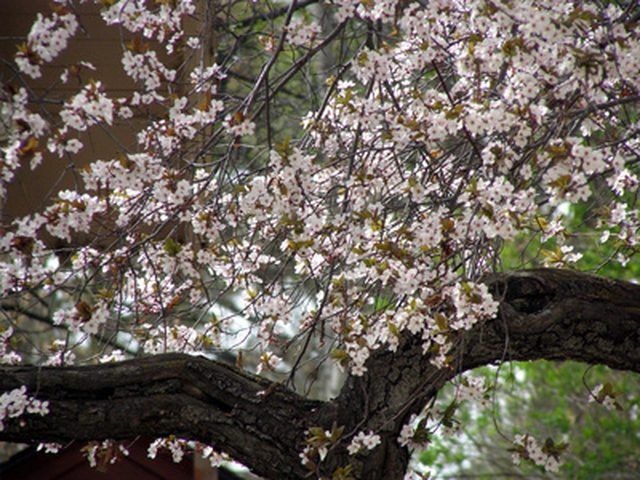Bulbs
Flower Basics
Flower Beds & Specialty Gardens
Flower Garden
Garden Furniture
Garden Gnomes
Garden Seeds
Garden Sheds
Garden Statues
Garden Tools & Supplies
Gardening Basics
Green & Organic
Groundcovers & Vines
Growing Annuals
Growing Basil
Growing Beans
Growing Berries
Growing Blueberries
Growing Cactus
Growing Corn
Growing Cotton
Growing Edibles
Growing Flowers
Growing Garlic
Growing Grapes
Growing Grass
Growing Herbs
Growing Jasmine
Growing Mint
Growing Mushrooms
Orchids
Growing Peanuts
Growing Perennials
Growing Plants
Growing Rosemary
Growing Roses
Growing Strawberries
Growing Sunflowers
Growing Thyme
Growing Tomatoes
Growing Tulips
Growing Vegetables
Herb Basics
Herb Garden
Indoor Growing
Landscaping Basics
Landscaping Patios
Landscaping Plants
Landscaping Shrubs
Landscaping Trees
Landscaping Walks & Pathways
Lawn Basics
Lawn Maintenance
Lawn Mowers
Lawn Ornaments
Lawn Planting
Lawn Tools
Outdoor Growing
Overall Landscape Planning
Pests, Weeds & Problems
Plant Basics
Rock Garden
Rose Garden
Shrubs
Soil
Specialty Gardens
Trees
Vegetable Garden
Yard Maintenance
How to Grow Cherry Trees in Texas
How to Grow Cherry Trees in Texas. Growing a cherry tree in the arid Texas climate may seem like a challenging feat for any gardener. However, cherries have been, and continue to be, successfully grown in Texas. A handful of cherry tree varieties are native to Texas and grow particularly well. Apart from proper tree selection, soil amending is a...

Growing a cherry tree in the arid Texas climate may seem like a challenging feat for any gardener. However, cherries have been, and continue to be, successfully grown in Texas. A handful of cherry tree varieties are native to Texas and grow particularly well. Apart from proper tree selection, soil amending is a great way to ensure that any newly-planted cherry tree will have the best chance at survival. Lastly, regular care and maintenance will provide the gardener with a great looking tree full of cherries for years to come.
Things You'll Need
Shovel
Soil amendments
Fertilizer (15-5-10 or 13-13-13)
Choose a tree that will grow in your particular area. The best variety of cherry to grow in Texas is without a doubt the black cherry (Prunus serotina). The USDA Native Plants Database shows four varieties of black cherry and one variety of chokecherry that are native to Texas. Use the database to see what variety grows best in your particular county. For example, the database indicates that Prunus serotina var. eximia will only grow in a few counties in southern Texas, whereas the virens variety is shown growing in the Big Bend area.
Prepare the soil for planting. Fruit trees prefer a sandy to loamy-clay soil. To test your soil, take a handful and add some water to it. If you are able to make it into a ball that holds its form, then your soil is probably comprised of too much clay. Amend the soil with a large particle amendment, like wood chips, to increase drainage and air flow to the roots. If you do not have particularly clay soil, consider adding a small amount of fresh topsoil and/or compost to give the plant a boost.
Use your shovel to dig a hole twice as wide and just as deep as the root system on the tree you are planting, and place the tree in the hole. If you are planting a tree that was containerized you will want to lightly score the roots with your fingers to encourage root growth. Also, Texas A&M's Cooperative Extension Service suggests you soak the roots in water prior to planting to avoid moisture shock.
Place the plant in the hole and backfill soil around the plant. Lightly tamp down the soil around the root system of the cherry tree and water it in when you are finished. Don't bury the plant in the ground; this can cause aerial root suffocation and lead to problems. Ideally, the top of the root system will be level with the ground when you are done planting.
Water the tree with a slow trickle of water for an extended period of time (15 to 20 minutes). This slow watering allows the water to penetrate into the soil and grow a dense root system, which will be crucial for survival later on. Continue watering on a regular schedule (a couple times a week) until the tree begins to establish itself.
Sprinkle a light amount of fertilizer on the base of the plant and water it into the soil. Follow the package directions for determining how much product to use on your particular plant. A 13-13-13 fertilizer is good for most areas, although some parts of Texas have high potassium soil that may require a slightly different formulation. Your local garden center or cooperative extension can inform you as to the best fertilizer for your area.
Tips & Warnings
Proper pruning is also necessary for long-term survival. See the article by TAMU in the reference section for tree specific pruning instructions.
Always use care when handling fertilizers.